Do you have a question about the Lincoln Town Car 2011 and is the answer not in the manual?
Discusses warning symbols and environmental protection efforts.
Guidance on the break-in period for a new vehicle.
Information on warranty, special instructions, and service data recording.
Explains warning lights, chimes, their meaning, and actions.
Describes gauges like speedometer, coolant temp, and the message center display.
Details on AM/FM stereo, CD, and cassette system functions.
Operation of the premium AM/FM stereo in-dash six CD sound system.
Operation of the dual zone automatic climate control system.
Manually controlling fan speed and airflow direction.
Operation and care of the rear window defroster.
Headlamp, autolamp, high beams, DRL, and flash-to-pass operation.
Panel dimmer and dome lamp controls.
Procedures for replacing exterior and interior light bulbs.
Operation of windshield wipers, washers, and related features.
Adjusting tilt steering wheel, interior, and exterior mirrors.
Setting the clock and using auxiliary power points.
Operation of power windows, locks, and window lock feature.
Using and setting the speed control (cruise control).
Using steering wheel audio/climate controls and universal garage opener.
Information on master/valet keys and operating power door locks.
Autolock, autounlock, childproof locks, and remote entry operation.
Using the keypad for entry and programming personal codes.
Explanation of the engine immobilization and anti-theft indicator.
Procedure for programming new keys to the vehicle.
Arming, disarming, and operation of the perimeter alarm.
Adjusting headrests, seats, lumbar, heated seats, and memory settings.
How the safety system and airbags work, including precautions.
Proper use, installation, and maintenance of child seats and boosters.
Explanation of tire quality grades, treadwear, traction, and temperature.
Proper procedures for inflating tires and inspecting for wear/damage.
Operation, warnings, and maintenance of the TPMS.
Understanding weight ratings, payload, and guidelines for trailer towing.
Ignition positions, preparing to start, and engine starting procedures.
Operation of brakes, ABS system, and parking brake.
How the system maintains stability and steerability on slippery surfaces.
Power steering operation and air suspension system functions.
Understanding gearshift positions, overdrive, and forced downshifts.
Precautions and procedures for driving in water.
Information on Ford's roadside assistance services in the U.S. and Canada.
Operation of hazard flashers for safety warnings.
Resetting the fuel pump switch and understanding fuse locations/ratings.
Procedures for changing a flat tire, including TPMS considerations.
Warnings and guidelines for using dissimilar spare tires.
Procedures for removing the spare tire and jack.
Proper torque specifications for tightening lug nuts.
Safety precautions and procedures for jump starting a vehicle.
Recommendations for proper towing procedures and equipment.
Guidelines for flat towing a vehicle under specific conditions.
Recommendations for warranty repairs and authorized dealers.
How to find the nearest dealer when traveling.
Mailing address, telephone numbers, and online resources.
Steps for resolving issues and information on warranty dispute procedures.
How to report vehicle defects to NHTSA (U.S.) and Transport Canada.
Proper methods and products for washing and waxing the vehicle exterior.
Cleaning fabric, carpets, seats, and leather interiors.
How to repair paint chips and prepare the surface.
Cleaning and maintaining aluminum wheels and covers.
Proper procedures for cleaning the engine compartment.
Cleaning plastic exterior parts with approved products.
Cleaning glass and wiper blades for optimal visibility.
Cleaning the dashboard, trim, and cluster lens.
Importance of scheduled maintenance and safety rules for servicing.
Identification of major components in the engine bay.
Procedures for checking and adding washer fluid, engine oil, and coolant.
Recommended oil type, viscosity, and filter specifications for engine health.
Information on battery care, cleaning, and storage.
How the system limits power and shuts down the engine to prevent damage.
Safety precautions and recommendations for gasoline and ethanol fuels.
Techniques for measuring and improving fuel economy.
Components and maintenance for emission standards compliance.
How the OBD-II system monitors emissions and detects malfunctions.
Checking and adding power steering fluid.
Checking brake fluid levels and their significance.
Checking and adding automatic transmission fluid.
Replacing the engine air filter element.
Guidelines for storing the vehicle for extended periods.
List of recommended Motorcraft parts and their numbers.
Table of fluids, capacities, and part numbers for maintenance.
Information on engine type, fuel, firing order, and spark plug gap.
Locating the Safety Compliance Certification Label and VIN.
Table relating transmission codes to specific types.
Importance of scheduled maintenance for vehicle protection and value.
Basic maintenance checks owners can perform and service intervals.
Recommended inspection items at each scheduled maintenance visit.
The standard maintenance schedule and log for recording service.
Discusses warning symbols and environmental protection efforts.
Guidance on the break-in period for a new vehicle.
Information on warranty, special instructions, and service data recording.
Explains warning lights, chimes, their meaning, and actions.
Describes gauges like speedometer, coolant temp, and the message center display.
Details on AM/FM stereo, CD, and cassette system functions.
Operation of the premium AM/FM stereo in-dash six CD sound system.
Operation of the dual zone automatic climate control system.
Manually controlling fan speed and airflow direction.
Operation and care of the rear window defroster.
Headlamp, autolamp, high beams, DRL, and flash-to-pass operation.
Panel dimmer and dome lamp controls.
Procedures for replacing exterior and interior light bulbs.
Operation of windshield wipers, washers, and related features.
Adjusting tilt steering wheel, interior, and exterior mirrors.
Setting the clock and using auxiliary power points.
Operation of power windows, locks, and window lock feature.
Using and setting the speed control (cruise control).
Using steering wheel audio/climate controls and universal garage opener.
Information on master/valet keys and operating power door locks.
Autolock, autounlock, childproof locks, and remote entry operation.
Using the keypad for entry and programming personal codes.
Explanation of the engine immobilization and anti-theft indicator.
Procedure for programming new keys to the vehicle.
Arming, disarming, and operation of the perimeter alarm.
Adjusting headrests, seats, lumbar, heated seats, and memory settings.
How the safety system and airbags work, including precautions.
Proper use, installation, and maintenance of child seats and boosters.
Explanation of tire quality grades, treadwear, traction, and temperature.
Proper procedures for inflating tires and inspecting for wear/damage.
Operation, warnings, and maintenance of the TPMS.
Understanding weight ratings, payload, and guidelines for trailer towing.
Ignition positions, preparing to start, and engine starting procedures.
Operation of brakes, ABS system, and parking brake.
How the system maintains stability and steerability on slippery surfaces.
Power steering operation and air suspension system functions.
Understanding gearshift positions, overdrive, and forced downshifts.
Precautions and procedures for driving in water.
Information on Ford's roadside assistance services in the U.S. and Canada.
Operation of hazard flashers for safety warnings.
Resetting the fuel pump switch and understanding fuse locations/ratings.
Procedures for changing a flat tire, including TPMS considerations.
Warnings and guidelines for using dissimilar spare tires.
Procedures for removing the spare tire and jack.
Proper torque specifications for tightening lug nuts.
Safety precautions and procedures for jump starting a vehicle.
Recommendations for proper towing procedures and equipment.
Guidelines for flat towing a vehicle under specific conditions.
Recommendations for warranty repairs and authorized dealers.
How to find the nearest dealer when traveling.
Mailing address, telephone numbers, and online resources.
Steps for resolving issues and information on warranty dispute procedures.
How to report vehicle defects to NHTSA (U.S.) and Transport Canada.
Proper methods and products for washing and waxing the vehicle exterior.
Cleaning fabric, carpets, seats, and leather interiors.
How to repair paint chips and prepare the surface.
Cleaning and maintaining aluminum wheels and covers.
Proper procedures for cleaning the engine compartment.
Cleaning plastic exterior parts with approved products.
Cleaning glass and wiper blades for optimal visibility.
Cleaning the dashboard, trim, and cluster lens.
Importance of scheduled maintenance and safety rules for servicing.
Identification of major components in the engine bay.
Procedures for checking and adding washer fluid, engine oil, and coolant.
Recommended oil type, viscosity, and filter specifications for engine health.
Information on battery care, cleaning, and storage.
How the system limits power and shuts down the engine to prevent damage.
Safety precautions and recommendations for gasoline and ethanol fuels.
Techniques for measuring and improving fuel economy.
Components and maintenance for emission standards compliance.
How the OBD-II system monitors emissions and detects malfunctions.
Checking and adding power steering fluid.
Checking brake fluid levels and their significance.
Checking and adding automatic transmission fluid.
Replacing the engine air filter element.
Guidelines for storing the vehicle for extended periods.
List of recommended Motorcraft parts and their numbers.
Table of fluids, capacities, and part numbers for maintenance.
Information on engine type, fuel, firing order, and spark plug gap.
Locating the Safety Compliance Certification Label and VIN.
Table relating transmission codes to specific types.
Importance of scheduled maintenance for vehicle protection and value.
Basic maintenance checks owners can perform and service intervals.
Recommended inspection items at each scheduled maintenance visit.
The standard maintenance schedule and log for recording service.
| Brand | Lincoln |
|---|---|
| Model | Town Car 2011 |
| Category | Automobile |
| Language | English |
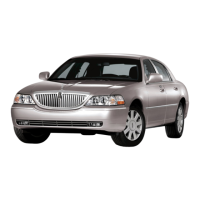
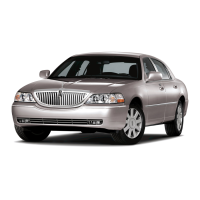
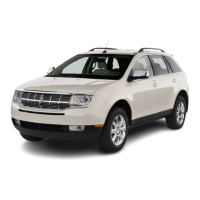
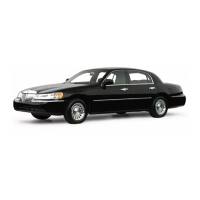

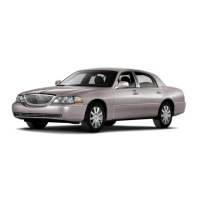
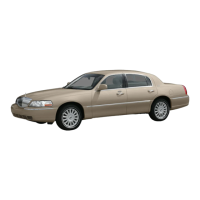
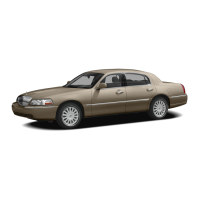
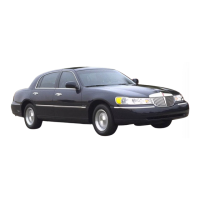
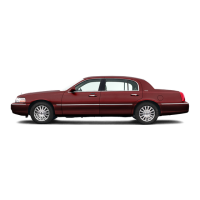
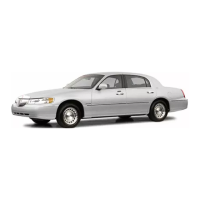
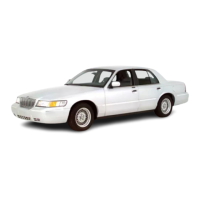
